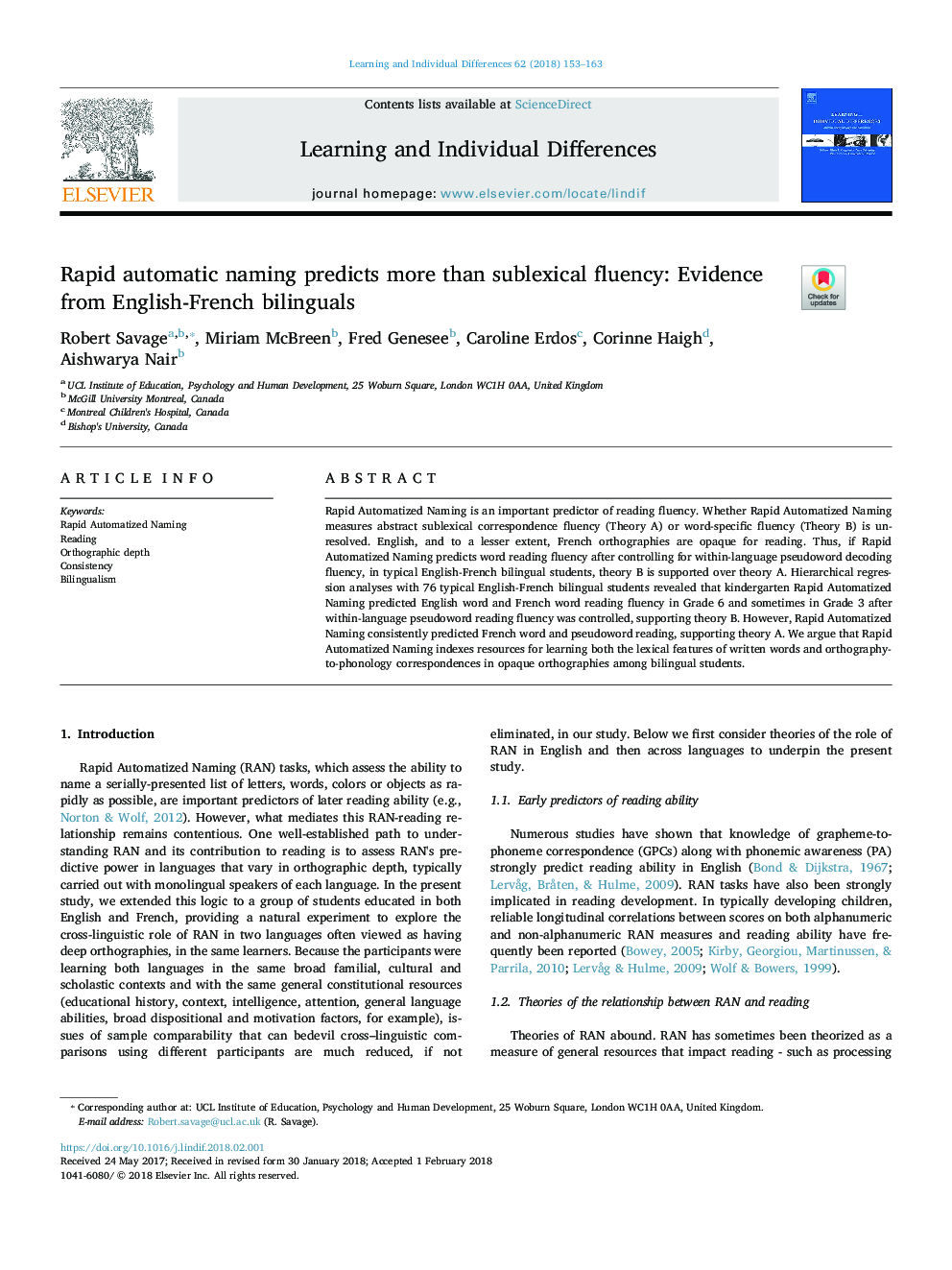| Article ID | Journal | Published Year | Pages | File Type |
|---|---|---|---|---|
| 6844475 | Learning and Individual Differences | 2018 | 11 Pages |
Abstract
Rapid Automatized Naming is an important predictor of reading fluency. Whether Rapid Automatized Naming measures abstract sublexical correspondence fluency (Theory A) or word-specific fluency (Theory B) is unresolved. English, and to a lesser extent, French orthographies are opaque for reading. Thus, if Rapid Automatized Naming predicts word reading fluency after controlling for within-language pseudoword decoding fluency, in typical English-French bilingual students, theory B is supported over theory A. Hierarchical regression analyses with 76 typical English-French bilingual students revealed that kindergarten Rapid Automatized Naming predicted English word and French word reading fluency in Grade 6 and sometimes in Grade 3 after within-language pseudoword reading fluency was controlled, supporting theory B. However, Rapid Automatized Naming consistently predicted French word and pseudoword reading, supporting theory A. We argue that Rapid Automatized Naming indexes resources for learning both the lexical features of written words and orthography-to-phonology correspondences in opaque orthographies among bilingual students.
Related Topics
Social Sciences and Humanities
Psychology
Developmental and Educational Psychology
Authors
Robert Savage, Miriam McBreen, Fred Genesee, Caroline Erdos, Corinne Haigh, Aishwarya Nair,
